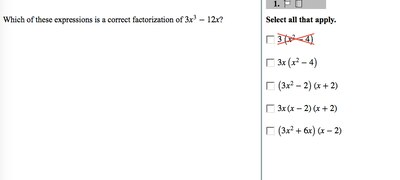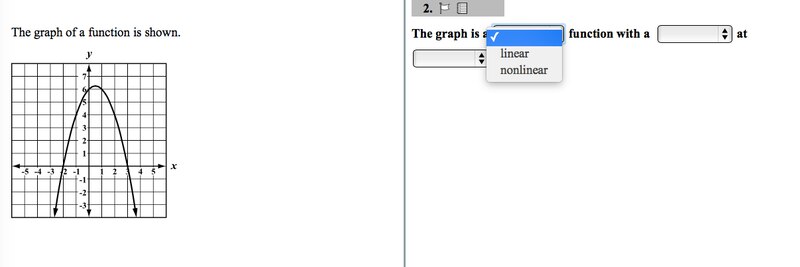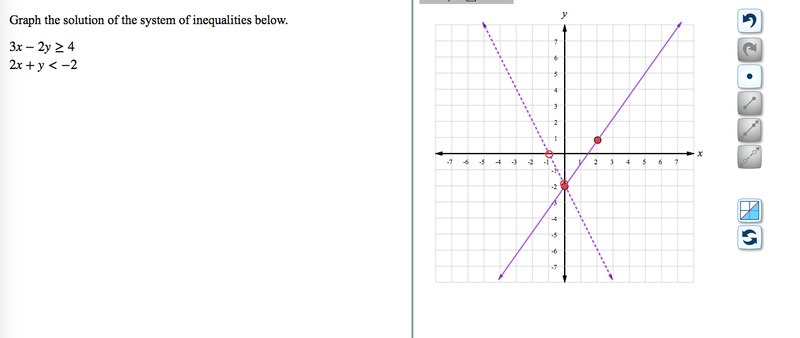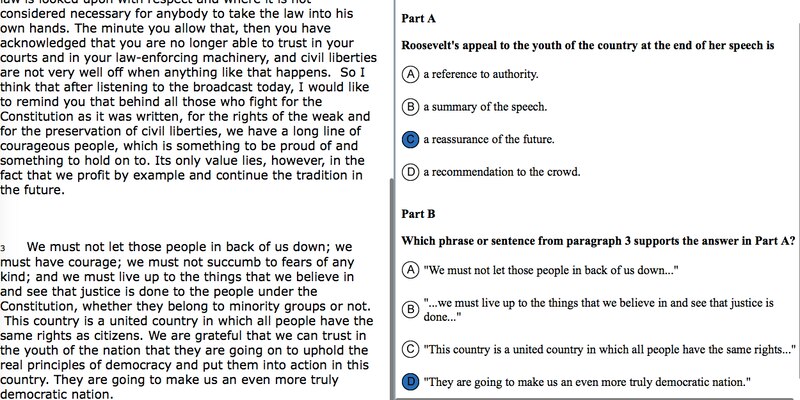Indiana’s high school end-of-course exams — which students must pass in English and Algebra to graduate — have mostly been untouched by the hot debate over new ISTEP exams and testing length for third- through eighth-graders.
But ninth grade Algebra and 10th grade English exams are changing too. Just not as much as ISTEP.
Changes to the high school tests also stem from Indiana’s adoption of new academic standards last year, which are designed to raise expectations for what kids should learn.
Besides tougher questions, the exams will also include “technology-enhanced” questions that are designed to use more advanced testing technology to measure what students know. No longer will the online tests just present multiple-choice questions that require clicking one answer. They will ask students to do more — manipulate graphs, choose words to justify answers and choose more answers at one time, for example.
Try them out if you like, but we went ahead and did some for you.
For some questions, the process of answering might look familiar: students are asked to choose an answer from a list, as with multiple choice exams. What’s different is they might be asked to choose more than one answer.

On questions, students can use a red “X” tool to eliminate answers, as shown above. The tools are lined up at the top of the screen. Others include a highlighter and a reference sheet with some definitions and algebraic equations.
Students also will have to use charts to prove they understand the difference between terms, such as in this example testing if they understand the difference between causation, data that shows one action causes another, and correlation, which simply shows two actions are connected but one might not cause the other.

Any configuration of boxes can be clicked, but there is just one right answer.
The test also will have fill-in-the-blank options, requiring students to complete a statement so that it reads true. Visuals, as seen here, could be part of such questions.

The most complicated sample question asks students to graph equations on the screen. To get the answer, students have to first solve each equation, then show the answer on the graph using the correct lines and points. Placing the points can be a little tricky, but clicking a line button automatically connects two points — no freehand lines need to be drawn.

On the English test, the sample questions ask students to analyze readings given before giving answers. Here, again, they can sometimes choose more than one potentially correct answer. The highlighter tool is designed to offer a helpful way to annotate the passage to make answering questions easier.
And finally, questions might have more than one part, where students must reference specific parts of the text to get the correct answer.

Students have options on the first part of the exam to use calculators, both digital and physical (but not cellphones). Scratch paper might be needed for Algebra questions that involve solving equations.
For more information about the exams, view resources on the Indiana Department of Education’s website.

